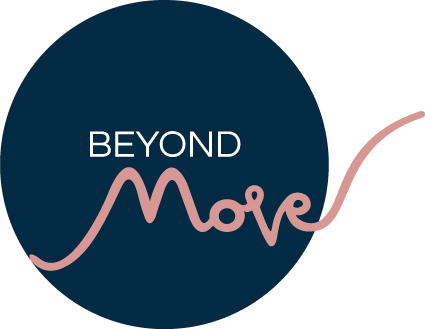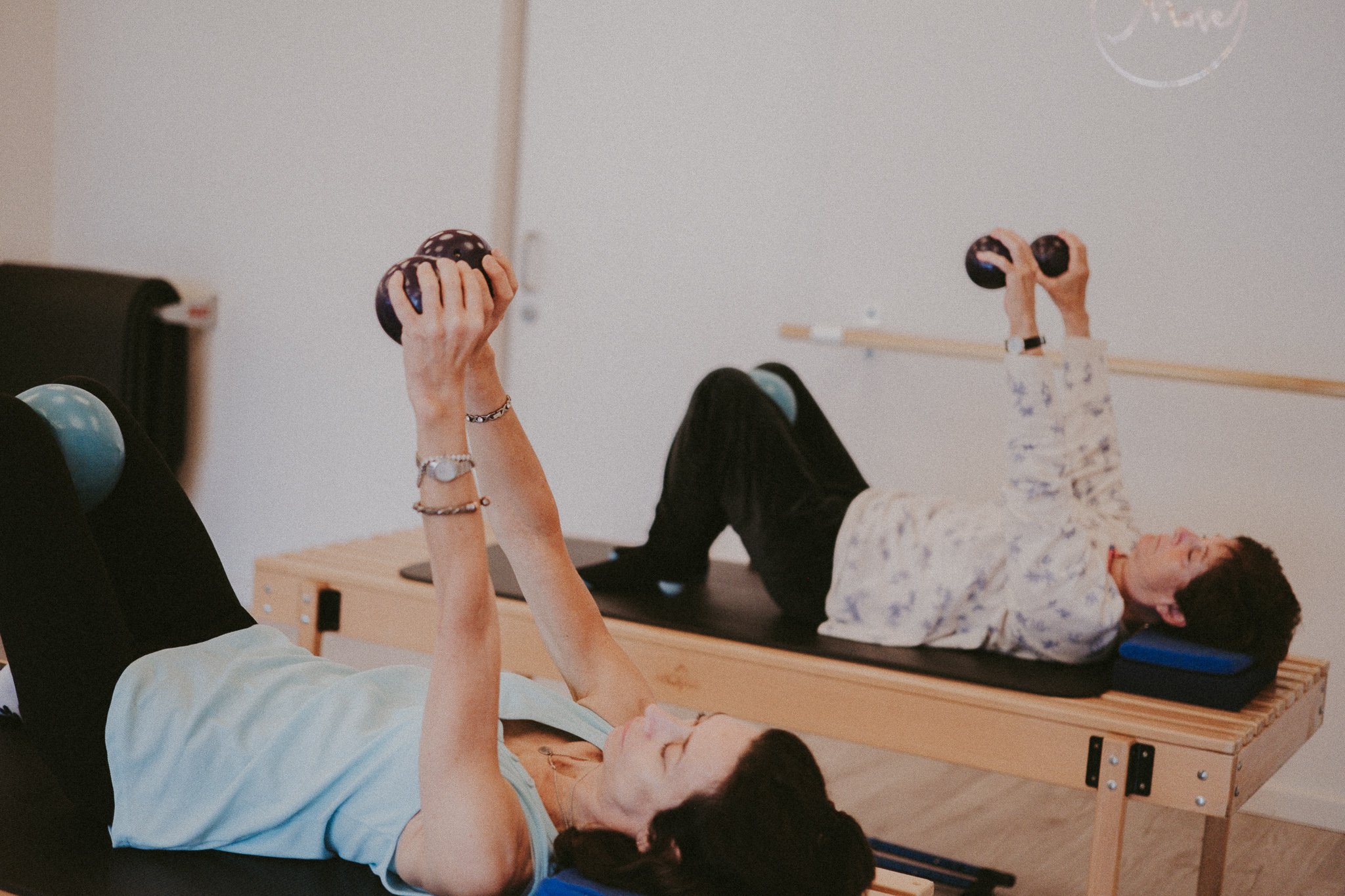
The Power of Mindful Movement
Hello,
By now you will already know how much I believe in enjoying movement for the sake of movement itself not for the before-and-after-photos.
For as long as I can remember, however, the fitness industry has remained obsessed with results and attaining a ‘perfect’ zero-body-fat look.
The problem with this is that it reduces good health to a matter of aesthetics and weight loss when in reality it is so much more. Health is way more than a number on a scale. The key to healthy bio-mechanics, and an injury-free and energetic life, is to learn to move in the right way and to build strength from the inside.
For me, the intention behind Beyond Move was to create a genuinely inclusive space, offering nourishing low-impact full-body workouts, where the emphasis is placed on the mental benefits of regular movement.
Moreover, I had discovered in my work with people living with neurological conditions like Parkinson's’ Disease or Multiple Sclerosis that combining the disciplines of Peto’s method with Pilates had brought about really positive change in the lives of my clients.
And so, Peto Pilates was born!
What is Peto Pilates?
In the 1940’s Professor Andras Peto, the Hungarian physician founded what is known as ‘conductive education’, which recognises motor disorders as learning disabilities rather than a condition that needs to be treated solely medically. The remedy, he concluded, is task oriented and ought to take into account the learning needs those with movement conditions have. Peto Pilates combines the wisdom of Peto’s conductive education with the skill and precision of Pilates, and I provide group and individual sessions throughout the week at the studio.
Of course, it should be obvious that people with movement conditions ought to ...well, move! But what is happening is that mainstream gyms and facilities are essentially failing to cater at all to this group of people.
That’s why we are so proud to genuinely be able to say at Beyond Move that we have beginner all the way to experienced movers, in our small and intimate sessions. Participants come from all walks and stages of life, and we all come to move in the same space. Where people need special attention, maybe for those who are pre- or postnatal, teens, post-operative or suffering from neurological conditions we have the ability to support your needs.
What sets our classes apart from the rest?
While my area of expertise is in Pilates and Peto Pilates, the studio also offers Yoga and Barre. I make sure that the teachers I work with understand the importance of not just cardiovascular health but also spinal health. We are interested in functional movement, which uses body-weight resistance and provides workouts that give clients the feeling of being stretched as well as worked.
The emphasis is on balanced low-impact, full-body workouts. When done right, this style of exercise is very effective at protecting students from injury, and in the meantime, strengthens the core, mobilises the spine and builds the foundations.
There’s a particular focus on being present. We care not a jot, as the Brits would say, about your leotards and crop tops; we just want you to get into your own world and enjoy the movements. When movement is carried out in this way, with joy and mindfulness, the evidence suggests it has the power to heal.
Release, Rest & Recharge
Focus on the benefit of release
When an emotion is not fully processed, or we are not entirely ready to release some fear or anxiety, it can become stored in the body.
During Pilates and Yoga, our movements become more profound, allowing us to release unnecessary tension and, therefore also, trapped emotions. This release can come in many forms, often crying or the opposite, laughing.
Release, Rest & Recharge
There is always a lot to explain in class. Personally, I mainly focus on the technicality and allow the participants to experience what is happening within them for themselves, rather than suggesting what ‘should’ be happening. While precision is crucial, if we bring awareness to the internal processes as well, it can bring a wonderful sense of well-being and also really speed up our progress.
So let’s focus on the benefit of release.
When an emotion is not fully processed, or we are not entirely ready to release some fear or anxiety, it can become stored in the body.
Modern life puts us under a lot of stress. We clench our jaws and even our buttocks! We stoop, slouching the shoulders, chin jutting forward. Without even being conscious of it we tighten our hips and pelvic floors to suppress emotions.
What is happening to us during Pilates & Yoga?
In class, we invite you to stop gripping, clenching and tightening but rather to connect to your muscles, nerve endings, breath and ultimately to yourself.
Physiologically, all exercise releases endorphins, which interact with serotonin and dopamine, the chemicals that impact mood. More specifically during the practices of both Pilates and Yoga, we connect our breathing to the activation of our deeper core muscles. This triggers the ‘relaxation response’ in the body.
As our emotions are calmed we feel more grounded and more aware of how we are moving. The quality of our movements becomes more profound, allowing us to release unnecessary tension and therefore also trapped emotions. This release can come in many forms, often crying or the opposite, laughing.
Knowing that this is happening, is half the battle. So how can we support ourselves to truly experience these subtle processes?
Listen to your breath. Be curious about how your breath can soften and release muscle tension. Take deep breaths and slow exhalations, to allow the parasympathetic nervous system, and therefore the muscles, to respond.
Be gentle and slow down. I always say this in class during stretching. Rapid, sharp movements can make things worse.
Pay attention to yourself. Try not to look at what others are doing on their mat. Comparing yourself to others is not helpful. Where are you are holding unnecessary tension? Observation is the first step to becoming more fluid in your movements. And with fluid movements comes an abundance of benefits!
Love, Noemi x
What is Garuda? New Class @Beyond Move - Wednesday at 7pm
“Where Pilates ends, Garuda begins. Holistic, organic, dynamic – Garuda is the hybrid that is revolutionizing our approach to fitness.”
Encompassing the principles of Pilates, the breathwork and asana practices of yoga, the grace and athleticism of dance, Garuda is the face of 21st-century fitness.
Garuda’s results are striking. Increased strength, flexibility, coordination and endurance, with a greater sense of ease and well-being. Garuda offers a cardiovascular workout while drawing deeply on mental focus and teaching the sacred principle of relaxation within the movement. The result is a stronger, leaner body, improved posture and true ease of both movement and mind.
“Where Pilates ends, Garuda begins. Holistic, organic, dynamic – Garuda is the hybrid that is revolutionizing our approach to fitness.”
Motivational
Resting and relaxing are essential parts of our lives, but before you know it you can go from just taking a break to having no energy and losing your motivation. Everyone experiences a lack of motivation, so why not share our tips and tricks on how to get ourselves back in the headspace to get things done.
The Magic is in YOU
So here are 5 motivational tips to keep exercising;
Make it fun. Find sports or activities that you enjoy, then vary the routine to keep it interesting whether it's a run, a swim or pilates or a yoga class ;-).
Make physical activity part of your daily routine.
If it's hard to find time for exercise, don't fall back on excuses. Try and plan at least 30 minutes every day.
Join forces with friends, neighbours or others. You're not in this alone. Invite friends or co-workers to join you when you exercise
Reward yourself. After each exercise session, take a few minutes to savour the good feelings that exercise gives you. This type of internal reward can help you make a long-term commitment to regular exercise
Be flexible. If you're too busy to work out or simply don't feel up to it, take a day or two off. Go easy on yourself if you need a break. The important thing is to get back on track as soon as you can.
BEYOND MOVE TEAM x







